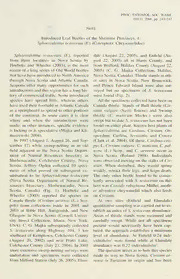
Toward a Galactic Distribution of Planets. I. Methodology & Planet Sensitivities of the 2015 High-Cadence Spitzer Microlens Sample PDF
Preview Toward a Galactic Distribution of Planets. I. Methodology & Planet Sensitivities of the 2015 High-Cadence Spitzer Microlens Sample
Draft version January 20, 2017 PreprinttypesetusingLATEXstyleAASTeX6v.1.0 TOWARD A GALACTIC DISTRIBUTION OF PLANETS. I. METHODOLOGY & PLANET SENSITIVITIES OF THE 2015 HIGH-CADENCE SPITZER MICROLENS SAMPLE Wei Zhu (祝伟)1,16,17, A. Udalski2,18, S. Calchi Novati3,4,16, S.-J. Chung5,6,17, Y. K. Jung7,17, Y.-H. Ryu5,17, I.-G. Shin7,17, A. Gould1,5,8,16,17, C.-U. Lee5,6,17, M. D. Albrow9,17, J. C. Yee7,16,17 AND C. Han10, K.-H. Hwang5, S.-M. Cha5,11, D.-J. Kim5, H.-W. Kim5, S.-L. Kim5,6, Y.-H. Kim5, Y. Lee5,11, B.-G. Park5,6, R. W. Pogge1 7 (KMTNet Collaboration) 1 R. Poleski1,2, J. Skowron2, P. Mro´z2, M. K. Szyman´ski2, I. Soszyn´ski2, P. Pietrukowicz2, S. KozLowski2, 0 K. Ulaczyk2,12, M. Pawlak2 2 (OGLE Collaboration) C. Beichman13, G. Bryden14, S. Carey15, M. Fausnaugh1, B. S. Gaudi1, C. B. Henderson14,19, Y. Shvartzvald14,19, n B. Wibking1 a (Spitzer Team) J 8 1 1DepartmentofAstronomy,OhioStateUniversity,140W.18thAve.,Columbus,OH43210,USA 2WarsawUniversityObservatory,AI.Ujazdowskie4,00-478Warszawa,Poland ] P 3IPAC,MailCode100-22,Caltech,1200E.CaliforniaBlvd,Pasadena,CA91125,USA E 4DipartimentodiFisica“E.R.Caianiello”,Universit`adiSalerno,CiaGiovanniPaoloII,84084Fisciano(SA),Italy h. 5KoreaAstronomyandSpaceScienceInstitute,776Daedeokdae-ro,Yuseong-Gu,Daejeon34055,Korea p 6KoreaUniversityofScienceandTechnology,217Gajeong-ro,Yuseong-gu,Daejeon34113,Korea o- 7Harvard-SmithsonianCenterforAstrophysics,60GardenSt.,Cambridge,MA02138,USA r 8Max-Planck-InstituteforAstronomy,Ko¨nigstuhl17,69117Heidelberg,Germany t s 9DepartmentofPhysicsandAstronomy,UniversityofCanterbury,PrivateBag4800Christchurch,NewZealand a [ 10DepartmentofPhysics,ChungbukNationalUniversity,Cheongju361-763,SouthKorea 11SchoolofSpaceResearch,KyungHeeUniversity,Giheung-gu,Yongin,Gyeonggi-do,17104,Korea 1 v 12DepartmentofPhysics,UniversityofWarwick,GibbetHillRoad,Coventry,CV47AL,UK 1 13NASAExoplanetScienceInstitute,MS100-22,CaliforniaInstituteofTechnology,Pasadena,CA91125,USA 9 14JetPropulsionLaboratory,CaliforniaInstituteofTechnology,4800OakGroveDrive,Pasadena,CA91109,USA 1 5 15SpitzerScienceCenter,MS220-6,CaliforniaInstituteofTechnology,Pasadena,CA91125,USA 0 16SpitzerTeam 1. 17KMTNetCollaboration 0 18OGLECollaboration 7 19NASAPostdoctoralProgramFellow 1 : v ABSTRACT i X We analyze an ensemble of microlensing events from the 2015 Spitzer microlensing campaign, all of r which were densely monitored by ground-based high-cadence survey teams. The simultaneous obser- a vationsfromSpitzer andthegroundyieldmeasurementsofthemicrolensingparallaxvectorπ ,from E which compact constraints on the microlens properties are derived, including (cid:46)25% uncertainties on thelensmassanddistance. Withthecurrentsample,wedemonstratethatthemajorityofmicrolenses are indeed in the mass range of M dwarfs. The planet sensitivities of all 41 events in the sample are calculated, from which we provide constraints on the planet distribution function. In particular, as- suming a flat planet mass function, we find that less than 49% of stars host typical microlensing planets, which is consistent with previous studies. Based on this planet-free sample, we develop the methodology to statistically study the Galactic distribution of planets using microlensing parallax measurements. Under the assumption that the planet distributions are the same in the bulge as in the disk, we predict that ∼1/3 of all planet detections from the microlensing campaigns with Spitzer shouldbeinthebulge. Thispredictionwillbetestedwithamuchlargersample, anddeviationsfrom it can be used to constrain the abundance of planets in the bulge relative to the disk. 2 Zhu et al. Keywords: gravitational lensing: micro — planetary systems — planets and satellites: dynamical evolution and stability — methods: statistical 1. INTRODUCTION alwaysthecase). Thedifficultyinpreciselydetermining the lens distance is a significant weakness of ground- The distribution of planets in different environments based microlensing in determining the Galactic distri- is of great interest. Studies have shown that the planet bution of planets, as has been demonstrated by Penny frequency may be correlated with the host star metal- et al. (2016). licity (e.g., Santos et al. 2001, 2003; Fischer & Valenti The most efficient way to determine or better con- 2005;Wang&Fischer2015;Zhuetal.2016b),thestellar strainthelensdistanceD isbymeasuringtheso-called mass(e.g.,Johnsonetal.2010),stellarmultiplicity(e.g., L microlens parallax vector π Eggenbergeretal.2007;Wangetal.2014),andexterior E stellarenvironment(e.g.,Thompson2013). Forthispur- π ≡ πrelµrel , (3) pose, probing the planet distribution outside the Solar E θE µrel Neighborhood is important. In particular, the planet which can be effectively achieved by simultaneously ob- distribution in the Galactic bulge, given its unique en- serving the same event from at least two well-separated vironment, can provide an extra dimension to test and (O(1 AU)) observatories (Refsdal 1966; Gould 1994). further develop our theories of planet formation. Thisisbecause,fortypicalGalacticmicrolensingevents, Probing the distribution of planets in the Galactic the projected Einstein radius on the observer plane, bulge, or more generally, at all Galactic scales, is a AU unique application of Galactic microlensing, because of r˜ = , (4) E π its independence on the flux from the planet host (Mao E & Paczynski 1991; Gould & Loeb 1992). For example, is of order ∼ 10 AU, and thus observers separated by Penny et al. (2016) used an ensemble of 31 microlens- ∼1 AU would see considerably different light curves of ing planets and found tentative evidence that the bulge the same microlensing event. For events with θE mea- might be deficient of planets compared to the disk. surements, including most planetary events, most bi- While microlensing is in principle sensitive to planets nary events, and relatively rare single-lens events, the at various Galactic distances, the distance determina- measurements of πE directly yield the lens mass and tion of any given microlensing event is nontrivial. This lens-source relative parallax is because, in the majority of cases, the only relevant θ M = E ; π =θ π , (5) observable from the microlensing light curve is the Ein- L κπ rel E E E stein timescale the latter being a good proxy for distinguishing disk θ tE ≡ µE . (1) and bulge lenses (see Section 4). For the great majority rel of single-lens events, θ cannot be measured from the E Here µrel is lens-source relative proper motion, and θE microlensing light curve, but the lens distribution (ML is the angular Einstein radius, andπ )canbemuchmoretightlyconstrainedonceπ rel E ismeasured,asfirstpointedoutbyHan&Gould(1995). (cid:112) 4G mas θE ≡ κMLπrel; κ≡ c2AU (cid:39)8.14M , (2) For this reason, the Spitzer Space Telescope has been (cid:12) employed for microlensing (Dong et al. 2007; Gould et where ML is the lens mass, πrel ≡ AU(DL−1 −DS−1) is al. 2013, 2014, 2015a,b, 2016). The 2014 Spitzer mi- the lens-source relative parallax, and DL and DS are crolensing experiment served as a pilot program that distances to the lens and the source (i.e., the star being successfully demonstrated the ability to measure mi- lensed), respectively. In planetary events, θE is usually crolensparallaxusingSpitzer (Udalskietal.2015a;Yee also measurable through the so-called finite-source ef- etal.2015a;CalchiNovatietal.2015;Zhuetal.2015a). fect (Yoo et al. 2004), in addition to two parameters Starting in 2015, the main goal of Spitzer microlensing that characterize the planet itself: the planet/star mass campaigns became measuring the Galactic distribution ratio q and the planet/star separation s in units of θE of planets (Calchi Novati et al. 2015; Yee et al. 2015b). (Gaudi & Gould 1997b). There nevertheless remains It is by no means trivial to organize Spitzer and a degeneracy between the lens mass and lens distance ground observations to enable a measurement of the (assuming the source is in the bulge, which is almost Galactic distribution of planets that is unbiased by ob- servational decisions. On the one hand, microlensing eventsmustbechosenforSpitzer observationsverycare- zhu.908@osu.edu fully in order to maximize both the sensitivity to plan- Galactic Distribution of Planets. I. Methods & First Sample 3 ets of the whole sample and the probability that these The present work is not aimed at directly answering observations will actually lead to a microlens parallax how planets are distributed within the Galaxy. Instead, measurement. On the other hand, these observational we develop a framework within which the above ques- decisions cannot in any way be influenced by whether tion can be ultimately addressed. It is nevertheless true planets have (or have not) been detected. The first ob- that the 50 events in our sample, observed at ∼10 min jectiverequires thatobservationaldecisions makemaxi- cadence nearly continuously throughout year 2015, are maluseofavailableinformation,whilethesecondmeans more sensitive to planets than the majority of the re- that a certain “blindness” to this information must be maining events in the 2015 Spitzer sample. Another rigorouslyenforced. Yeeetal.(2015b)discussedingreat significant contributor to the overall planet sensitivity detail how to optimize observations while enforcing this would be high-magnification events, which have nearly blindness, and a short summary is given in Section 2.3. 100% sensitivity to planets (Griest & Safizadeh 1998; InterestedreadersareurgedtoconsultYeeetal.(2015b) Gould et al. 2010) but are considerably rarer. These for more details. high-magnification events will be analyzed separately. Following the Yee et al. (2015b) protocol, the 2015 This paper is organized as follows. Section 2 summa- Spitzer microlensing campaign observed 170 microlens- rizes our observations and reduction methods for both ing events that were first found in the ground-based ground-based and space-based data; Section 3 describes microlensing surveys, namely the Optical Gravitational our selection of the raw sample; in Section 4 we provide Lensing Experiment (OGLE, Udalski 2003; Udalski et themethodologyforanalyzingindividualevents,includ- al. 2015b) and the Microlensing Observations in Astro- ing four-fold solutions, distance and mass estimations, physics (MOA, Bond et al. 2001; Sako et al. 2008). In andplanetsensitivitycomputation. Thismethodisthen this work, we present analysis of 50 of them that fall appliedtothecurrentsample, andresultsarepresented within the footprints of OGLE and the prime fields of in Section 5. In Section 6 we discuss the implications of the newly established KMTNet (Korean Microlensing this work, as well as outline the path for future work. Telescope Network, Kim et al. 2016). Table 1. Summary of the 50 events in our sample. Here (RA,Dec) are the equatorial coordinates, and (l,b) are the Galactic coordinates. Wealsoincludethesubjectiveselectiondatesandobjectiveselectiondates(ifobjectivecriteriaaremet),OGLE- IV Bulge fields and cadences. In the last column, we present the HJD dates of the first and last Spitzer observation, as well as the total number of observations from Spitzer. OGLE# RA(deg) Dec(deg) l(deg) b(deg) Subjective Objective OGLE-IVfields, Spitzer observations selection selection cadences(perday) start,stop,# 0011 269.217833 −29.283250 0.957550 −2.289872 5-30-11:59 — BLG505,30 7184.96,7222.58,53 0029 269.944167 −28.644944 1.828415 −2.522683 5-10-14:33 6-01 BLG505,30 7185.31,7222.89,52 0034 270.580333 −27.516083 3.088357 −2.452817 4-28-17:01 6-08 BLG511,10 7186.01,7222.92,62 0081 268.653000 −28.996278 0.957513 −1.719135 6-01-14:25 — BLG505,30 7184.10,7221.81,57 0350 268.248583 −31.820278 −1.657210 −2.846465 5-19-20:45 6-01 BLG535,3 7183.95,7221.76,61 0379 269.104292 −29.574056 0.656089 −2.350021 5-19-20:45 6-01 BLG505,30 7184.61,7222.58,54 0388 268.468917 −28.534028 1.274824 −1.346174 5-10-14:33 6-01 BLG500,10 7183.98,7221.81,66 0461 270.043208 −28.156944 2.295828 −2.356385 5-19-20:45 — BLG504,10 7185.79,7222.90,58 0529 270.264667 −29.922917 0.854524 −3.397576 5-16-22:18 6-08 BLG513,3 7185.79,7222.92,51 0565 269.153708 −29.128056 1.063892 −2.163672 5-16-22:18 6-01 BLG505,30 7184.62,7222.59,53 0692 268.079708 −28.133917 1.445571 −0.847872 6-04-20:26 — BLG500,10 7185.70,7221.06,73 0703 269.048583 −29.853389 0.389932 −2.448268 5-26-17:03 — BLG506,10 7184.47,7222.17,65 0772 269.421583 −28.143139 2.034808 −1.874139 5-19-20:45 6-01 BLG504,10 7184.99,7222.60,54 0798 271.680583 −27.590167 3.500842 −3.340118 6-06-12:51 6-15 BLG519,3 7186.86,7222.95,47 0843 271.197042 −27.176472 3.653525 −2.763710 5-29-20:37 6-15 BLG511,10 7186.87,7222.95,61 0958 267.754958 −28.416861 1.056253 −0.746314 6-01-14:25 — BLG500,10 7183.32,7221.06,64 0961 268.146375 −30.080361 −0.201042 −1.888218 6-07-23:49 6-22 BLG501,30 7185.69,7221.75,131 0965 269.291083 −28.961056 1.268736 −2.183974 5-19-20:45 6-27 BLG505,30 7184.99,7222.59,52 0987 268.193708 −28.361222 1.300964 −1.049978 5-22-18:25 — BLG500,10 7183.97,7221.07,65 1096 267.872333 −32.153694 −2.107022 −2.740847 6-04-20:26 6-08 BLG535,3 7183.40,7221.04,62 1148 270.259625 −28.686111 1.929738 −2.783576 6-02-17:38 6-08 BLG512,30 7185.79,7198.56,22 Table 1 continued 4 Zhu et al. Table 1 (continued) OGLE# RA(deg) Dec(deg) l(deg) b(deg) Subjective Objective OGLE-IVfields, Spitzer observations selection selection cadences(perday) start,stop,# 1161 267.618375 −29.979222 −0.347291 −1.443448 6-14-21:03 6-22 BLG501,30 7192.59,7220.61,34 1167 269.024500 −28.626361 1.441266 −1.814015 6-04-20:26 — BLG505,30 7184.46,7222.19,56 1172 268.545417 −31.103194 −0.909634 −2.702396 6-07-23:49 — BLG534,10 7185.73,7198.41,24 1188 268.877125 −31.281667 −0.921031 −3.037417 6-06-12:51 6-08 BLG507,3 7184.34,7222.16,56 1189 270.735000 −30.373056 0.661672 −3.972901 6-14-21:03 6-27 BLG513,3 7192.80,7222.92,87 1204 268.927083 −29.384306 0.742788 −2.121334 6-22-13:33 — BLG505,30 7199.50,7222.18,27 1227 268.327417 −29.652833 0.247240 −1.806486 6-22-13:33 — BLG501,30 7199.41,7221.83,26 1256 269.537083 −28.769083 1.542874 −2.274684 6-10-16:50 6-15 BLG505,30 7185.77,7206.26,31 1289 269.461583 −28.217306 1.988161 −1.941743 6-25-02:00 6-27 BLG504,10 7206.94,7222.83,22 1295 270.226042 −27.302139 3.119220 −2.073683 6-22-13:33 7-04 BLG511,10 7199.39,7223.07,127 1297 268.087542 −29.683806 0.114644 −1.642668 6-14-21:03 — BLG501,30 7192.59,7206.05,17 1341 268.563667 −28.350167 1.475620 −1.324980 6-17-21:48 — BLG500,10 7199.47,7221.81,25 1348 269.487708 −30.509417 0.011068 −3.104974 6-22-13:33 — BLG506,10 7199.55,7223.05,29 1370 268.956667 −29.124111 0.980838 −2.012828 6-29-11:49 — BLG505,30 7206.90,7222.18,19 1383 268.651292 −28.702250 1.210644 −1.569361 7-06-14:02 — BLG500,10 7213.53,7221.94,22 1400 268.109625 −28.866250 0.828498 −1.243286 7-06-14:02 — BLG500,10 7213.47,7221.55,20 1412 270.124875 −27.435361 2.958886 −2.061583 7-03-21:36 — BLG511,10 7207.00,7223.05,35 1420 271.477500 −28.557361 2.566430 −3.652682 7-06-14:02 — BLG512,30 7213.65,7223.01,28 1440 270.973167 −27.707417 3.092557 −2.850007 7-06-14:02 — BLG511,10 7213.64,7222.99,28 1447 269.233417 −31.941111 −1.340799 −3.630143 7-06-14:02 — BLG507,3 7213.50,7222.81,27 1448 270.939333 −27.852194 2.951486 −2.894789 7-05-03:24 — BLG511,10 7207.04,7222.99,35 1450 270.210000 −28.671028 1.921336 −2.738270 7-06-14:02 — BLG512,30 7213.51,7223.07,56 1457 267.857167 −30.436389 −0.634887 −1.854477 6-30-15:05 — BLG501,30 7206.78,7221.04,17 1470 268.501833 −31.592806 −1.351638 −2.917355 6-29-11:49 — BLG534,10 7206.82,7221.84,18 1481 268.008083 −30.985028 −1.041156 −2.245626 7-06-14:02 — BLG534,10 7213.48,7221.54,20 1482 267.630542 −30.888694 −1.123568 −1.917963 7-03-21:36 7-05 BLG534,10 7206.73,7221.04,17 1492 268.686000 −29.707361 0.357806 −2.102828 7-06-14:02 — BLG501,30 7213.48,7221.95,22 1530 269.018958 −28.240472 1.772583 −1.615871 7-06-14:02 — BLG504,10 7213.53,7222.38,24 1533 269.048083 −29.476417 0.716065 −2.258729 7-06-14:02 — BLG505,30 7213.51,7222.38,24 2. OBSERVATIONS & DATA REDUCTIONS The KMTNet consists of three 1.6-m telescopes lo- catedatCTIOinChile,SAAOinSouthAfrica,andSSO 2.1. OGLE in Australia. Observations were initiated on February All events in our sample were found by the Opti- 3rd (JD=2457056.9), February 19th (JD=2457072.6), cal Gravitational Lensing Experiment (OGLE) collab- and June 9th (JD=2457182.9) in 2015 from CTIO, oration in real-time through its Early Warning System SAAO, and SSO, respectively. Each telescope is (Udalski et al. 1994; Udalski 2003), based on observa- equipped with a 4 deg2 field-of-view camera, and ob- tionswiththe1.4deg2cameraonits1.3-mWarsawTele- serves the ∼16 deg2 prime microlensing fields at ∼10 scopeattheLasCampanasObservatoryinChile(Udal- min cadence when the bulge is visible. ski 2003; Udalski et al. 2015b). These events received The KMTNet data were reduced by the DIA photo- OGLE-IV observations with cadences varying from 3 to metric pipeline (Alard & Lupton 1998; Albrow et al. 30 per day. The coordinates, OGLE-IV fields and ca- 2009). dences of individual events are provided in Table 1. OGLE data were reduced using the photometry soft- 2.3. Spitzer ware developed by Wozniak (2000) and Udalski (2003), As detailed in Yee et al. (2015b), the Spitzer pro- whichwasbasedontheDifferenceImageAnalysis(DIA) gram is designed to maximize the sum of the prod- technique (Alard & Lupton 1998). ucts (cid:80) S P , where S is the planet sensitivity of event i i i i i and P is the probability to measure the microlens i 2.2. KMTNet parallax of this event. As a consequence, the Spitzer Galactic Distribution of Planets. I. Methods & First Sample 5 team started selecting targets beginning in early May, is usually achieved by using the less frequent V band 2015, although Spitzer did not start taking data until observations from survey teams, but it does not work JD(cid:48)=JD-2450000=7180.2 (2015 June 6.7). To enforce for events that are highly extincted in optical bands. our blindness to the existence of planets in any events, For this reason, we also obtained observations of all weselecteventsif(1)theymeetcertainobjectivecriteria Spitzer targetsusingtheANDICAM(DePoyetal.2003) at the time of one of the uploads of targets to Spitzer, dichroic camera on the 1.3 m SMARTS telescope at in which case they are considered as “objectively cho- CTIO. These observations were made simultaneously in sen”, or (2) they do not meet objective criteria, but are I andH bands,andwereforthespecificpurposeofinfer- nevertheless selected on the basis that the Spitzer team ringtheI−[3.6µm]colorofthesourcestar. Theseaddi- (cid:80) believes that by selecting them the quantity S P tionalcolordatawerereducedusingDoPhot(Schechter i i i canbemaximized. Eventsselectedinthelattercaseare et al. 1993). known as “subjectively chosen”. For objectively chosen events,planetsaswellasplanetsensitivitiesfrombefore 3. RAW SAMPLE SELECTION or after the Spitzer selection dates can be incorporated According to Yee et al. (2015b), only events in which intothestatisticalanalysis,whileforsubjectivelychosen π can be “measured” are useful for the study of the E events,onlyplanets(andplanetsensitivities)fromafter Galactic distribution of planets. While the phrase “π E the Spitzer selection dates can be included in the final ismeasured”isnotdefineduntilSection5.2,weprovide sample. 1 One relevant point is that, any event that is here our procedure for raw sample selection. originally subjectively chosen but later meets objective In 2015, there are in total 68 Spitzer events that fall criteria will be considered as objective chosen (provided within the footprints of KMTNet prime fields. The fol- its parallax is measurable based on the restricted set of lowingeventsareexcludedfromtherawsampleforvar- Spitzer data acquired after the date it became objec- ious reasons: tive). Events once selected are given Spitzer cadences ac- - Three were not covered by OGLE; they were se- cording to suggestions in Yee et al. (2015b). The ma- lected for Spitzer observations based on alerts jority of events received Spitzer observations at 1/day by MOA: MOA-2015-BLG-079, MOA-2015-BLG- cadence. Highercadenceswereassignedtoafewevents, 237, and MOA-2015-BLG-267. if the Spitzer team believed the nominal cadence would - EventOGLE-2014-BLG-0613wasalertedin2014; lead to failures in parallax measurements. After all it has extremely long timescale and has not targets were scheduled according to their adopted ca- reached baseline by the time this study started. dences,theremainingtime,ifany,wasappliedtoevents that appeared or would appear with relatively high- - Event OGLE-2015-BLG-1136 was later on identi- magnification as seen from the ground. Spitzer obser- fied as a cataclysmic variable (CV) rather than a vations stopped if the pre-defined criteria for stopping microlensing event. observationsinYeeetal.(2015b)weremet,ortheevent exited the Spitzer Sun-angle window. Our last Spitzer - Six events show perturbations that can only be observation was taken on JD(cid:48) =7222.28. In Table 1 we explained by stellar binaries: OGLE-2015-BLG- provide the information of Spitzer selection and obser- (0060, 0914, 0968, 1346, 1368) and OGLE-2015- vation of each individual event. BLG-1212 (Bozza et al. 2016). Spitzer data were reduced using the customized soft- - Events OGLE-2015-BLG-0022 and OGLE-2015- ware that was developed by Calchi Novati et al. (2015) BLG-0244 show significant contamination of xal- specificallyforthisprogram. Thissoftwareimprovedthe larap effect (binary-source orbital motion). performance of Spitzer IRAC photometry in crowded fields, although unknown systematics may persist in - Events OGLE-2015-BLG-1109 and OGLE-2015- some cases. We discuss this in Section 5.1. BLG-1187 have impact parameters as seen from Earth u > 1, which implies extremely low 0,⊕ 2.4. Additional Color Data planet sensitivities. The characterization of a microlensing event requires - Themicrolensparallaxvectorπ ofeventsOGLE- E a measurement of the color of the source star. This 2015-BLG-1184 and OGLE-2015-BLG-1500 could not be measured, because the time coverages by Spitzer are too short and the Spitzer light curves 1 More precisely, planets (and the putative planets needed for do not show any features of microlensing (Calchi the sensitivity calculation) that are detectable in data that were availabletotheteampriortotheirdecision,mustbeexcluded. Novati et al. 2015). 6 Zhu et al. - Themicrolensparallaxvectorπ ofeventOGLE- is directly measurable from the light curve. Therefore, E 2015-BLG-1403 could not be constrained because satellite parallax measurements are subject to a four- of the lack of the source color constraint. fold degeneracy 2 AU Therefore, our raw sample contains 50 events. Informa- π ≈ (∆τ,∆β ) , (8) E D ±,± tion regarding their (equatorial and Galactic) positions ⊥ andobservations(byOGLEandSpitzer)isgiveninTa- where ble1. Sincealloftheseeventslieinoneofthefourprime KuoMusTlyN,etthefiierldKsM, wThNicehtwcaedreenocbessearvreedvierstsueanltliyalildyencotinctailn.- ∆∆ββ++,,−+ ≡≡+−uu00,,ssaatt−−uu00,,⊕⊕ ,,((++,,−+)) ssoolluuttiioonn . (9) 4. METHODS ∆∆ββ−,− ≡≡+−uu0,sat−+uu0,⊕ ,,((−−,,−+)) ssoolluuttiioonn Thesensitivitytoplanetsofamicrolensingeventwith −,+ 0,sat 0,⊕ a parallax measurement (and hence of an ensemble of In principle, higher-order effects in the light curve it- such events) can be logically divided into two distinct self can break this degeneracy. At first order (in the problems. First, one must determine the probability polynomial expansion of Smith et al. 2003), it can be function of the lens “distance” (defined more precisely broken from the different Einstein timescales t mea- E below). Second, for each allowed distance, one must de- sured from Earth and satellite due to their relative mo- terminethesensitivitytoplanetsasafunctionofplanet tion (even within the approximation of rectilinear mo- parameters,eitherthemicrolensing(q,s)orthephysical tion)(Gould1995). Atthirdandfourthorder,itcanbe parameters(m ,a ). Theseissueshavebeenpreviously broken due to parallax effects from the accelerated mo- p ⊥ addressedseparatelybyCalchiNovatietal.(2015), Yee tion of Earth (Gould 1992). In practice, however, these et al. (2015b), and Zhu et al. (2015b). However, since effects are usually quite weak. First, with current ex- thisisthefirstmeasurementofsensitivitytotheGalac- periments, t is normally not independently measured E tic distribution of planets, we likewise present here the from the satellite simply because the observational in- firstintegratedoverviewofthemathematicsofthismea- vestment for this would be extremely high (Gaudi & surement. Moreover, based on this integration, we will Gould 1997a), and these resources are better applied identify some previously overlooked components of the to observing more events. Ground-based parallaxes are analysis and also modify some past procedures. rarelymeasuredbecausetheEinsteintimescalesaretyp- Descriptions of the derivation of event solutions (Sec- ically small t < yr/2π, so that third, and particularly E tion 4.1), the estimation of lens distance and mass dis- fourth, order effects are very subtle. This indeed is the tributions (Section 4.3), and the computation of planet reason for going to space. Nevertheless, although these sensitivities (Section 4.4) follow immediately below. higher-order effects are small, they can contribute to breaking the degeneracy between well-determined, but 4.1. Four-Fold Solutions otherwise indistinguishable parallax solutions. The separation between Earth and the satellite per- Wesearchforandcharacterizethefoursolutionsusing pendiculartothelineofsighttothemicrolensingevent, the code developed in Zhu et al. (2016a). We first find D⊥, causes apparent changes in the angular lens-source a simple three-parameter (t0,u0,tE) solution based on separation ∆θ =π D /AU, and this in turn gives rise OGLE data. Next, we include Spitzer data, introduce rel ⊥ todifferentmicrolensinglightcurves. Theselightcurves, two parameters πE,N and πE,E, which are the two com- as seen from Earth and from the satellite, appear to ponentsofvectorπEalongthenorthandeastdirections, peak at different times t and with different impact pa- respectively, and easily find one of the four parallax so- 0 rameters u (normalized to θ ). In the approximation lutions by allowing χ2 to go downhill. As per the usual 0 E of rectilinear motion of Earth and the satellite (Refsdal convention, these parameters (πE,N, πE,E, tE) are de- 1966; Gould 1994; Graff & Gould 2002) finedinthegeocentricframe(Gould2004). Thelocation of the Spitzer satellite is extracted from the JPL Hori- AU π ≈ (∆τ,∆β) , (6) zons website 3, enabling a self-consistent quantification E D ⊥ of the microlens parallax effect and the event timescale. where t −t ∆τ ≡ 0,sat 0,⊕; ∆β ≡u −u . (7) t 0,sat 0,⊕ 2 Here we adopt the following notation for the degenerate so- E lutions: [sgn(u0,⊕),sgn(u0,spitz)]. See Zhu et al. (2015a) for the Unfortunately, u0 is a signed quantity (depending on conversionbetweenthisnotationandtheone usedinCalchiNo- whetherthelenspassesthesourceonitsrightorleft,see vatietal.(2015). Fig. 4 of Gould 2004 for sign definition), while only |u | 3 http://ssd.jpl.nasa.gov/?horizons 0 Galactic Distribution of Planets. I. Methods & First Sample 7 In addition, there are two flux parameters for each data that, even if the peak were not observed from the satel- set, F and F . The former is the flux from the source, lite, it would be possible to recover (t ,t ) provided s b 0 E sat andthelatteristhefluxthatisblendedwithintheaper- that the Spitzer source flux could be determined from ture and does not participate in the event. The model a combination of (1) the measured source flux of the for the total flux observed at epoch t for data set j is ground-based light curve, (2) the measured source color i then given by inground-basedbands(V −I orI−H),and(3)acolor- colorrelation(e.g., VI[3.6µm])derivedfromfieldstars. Fj(t )=Fj ·Aj(t ;t ,u ,t ,ρ,π )+Fj . (10) i s i 0 0 E E b In practice, we derive the (I −[3.6µm]) from the mea- Onceasolutionisfound,weestimatetheuncertaintiesof suredcolorandcolor-colorrelationandthenimposethe parameters via a Markov Chain Monte Carlo (MCMC) 2σ limitsofthismeasurementashardconstraintsinthe analysis, using the emcee ensemble sampler (Foreman- fit. Mackey et al. 2013). The remaining three solutions are alsoeasilyfoundbyseedingsolutionsatthelocationsex- 4.2. Galactic Model pected based on Equation (8). In some cases, typically 4.2.1. Stellar Density Profile events with long timescales or events peaking near the The Galactic Center has equatorial coordinates beginningoftheseason,thereisnolocalminimumatχ2 (α ,δ ) = (17h45m37s.224,−28◦56(cid:48)10(cid:48).(cid:48)23) (Reid & surface for one or more solutions due to strong parallax GC GC Brunthaler 2004) and heliocentric distance R = information from the ground. Within the mathemati- GC 8.3 kpc (Gillessen et al. 2009). The Sun is above the cal formalism that follows, these other solutions can be Galactic mid-plane (z =0) by 27 pc (Chen et al. 2001), thought of as “existing” but having very high ∆χ2 rel- which corresponds to a tilt angle β =0.19◦. ative to the best solution. The total stellar number density n at given Galacto- Foreachofthefoursolutionswethenderiveπ ,v˜ , (cid:63) E hel centric coordinates (x,y,z) is the sum of contributions the uncertainty of the latter quantity, and ∆χ2 relative from the bulge and disk components to the best solution. Here, v˜ is the transverse veloc- hel ity between the source and the lens projected onto the n (x,y,z)=n (x(cid:48),y(cid:48),z(cid:48))+n (R,z) . (13) (cid:63) B D observer plane, after the correction from geocentric to WeassumeatriaxialG2modelforthebulgecomponent heliocentric frames, (Kent et al. 1991; Dwek et al. 1995). AUπ v˜ =v˜ +v ; v˜ = E , (11) wherev⊕,h⊥elisthegveoelocit⊕y,o⊥fEartgheoatthetEevπenE2tpeakand nB =nB,0e−rs2/2; rs ≡(cid:40)(cid:34)(cid:18)xx0(cid:48)(cid:19)2+(cid:18)yy0(cid:48)(cid:19)2(cid:35)2+(cid:18)zz0(cid:48)(cid:19)4(cid:41)1/4 , projected perpendicular to the directory of the event. (14) To facilitate further discussions, we also define here the where n = 13.7 pc−3, x = 1.59 kpc, y = 424 pc, B,0 0 0 event timescale in the heliocentric frame and z =424 pc. These values are adopted from Robin 0 t(cid:48) ≡ r˜E ; r˜ ≡ AU . (12) et al. (2003). The coordinates (x(cid:48),y(cid:48),z(cid:48)) are derived by E v˜ E π rotating the Galactocentric coordinates (x,y,z) around hel E Inderivingeventsolutions,weareabletoincorporate z axis by αbar = 30◦ (e.g., Cao et al. 2013; Wegg & “color constraints” (either VI[3.6µm] or IH[3.6µm]) Gerhard 2013). The disk component in Equation (13) into the fit. This is either very important or essen- has the form (Bahcall 1986) tial for the great majority of cases, as anticipated by (cid:20) (cid:18) (cid:19)(cid:21) R−R |z| Yee et al. (2015b). The naive idea of space-based par- nD =nD,0exp − R GC + z . (15) 0 D,0 allaxes, as outlined by Refsdal (1966) and Gould (1994) (cid:112) and as captured by Equation (6), is that t0 and u0 Here R ≡ x2+y2, the local stellar number density will be measured independently from the satellite and n = 0.14 pc−3, the scale length of the disk R = D,0 0 Earth. However, such independent measurements are 3.5 kpc, and the scale height of the disk z = 325 pc D,0 essentially impossible if the event is not observed over (Han & Gould 1995). We show in Figure 1 the stel- (or at least close to) peak. Hence, in the 2014 pilot lar number density profile toward the Baade’s window, program, exceptional efforts were made to observe over whichisapproximatelythecenterofmicrolensingfields. peak,whichgreatlyrestrictedthenumberofeventsthat could be targeted, given the short (∼38 day) observing 4.2.2. Stellar Velocity Distribution window set by Spitzer Sun-angle restrictions and given The mean stellar velocity at Galactocentric coordi- the6±3daydelaysinobservingtargets(Fig.1ofUdal- nates (x,y,z) has the form ski et al. 2015a). However, based on experience in op- n n tical bands (Yee et al. 2012), Yee et al. (2015b) argued µ (x,y,z)= Bµ + Dµ , (16) v n v,B n v,D (cid:63) (cid:63) 8 Zhu et al. 7 9 ) ) 3 Disk 3 Disk − − c 6 c p Bulge p Bulge ( ( y Total y 3 Total 5 t t i i s s n n e 4 e D D 1 r r e e 3 b b m m u u N 2 N 0.3 r r a a l 1 l l l e e t t S S 0 0.1 0 2 4 6 8 10 0 2 4 6 8 10 Distance (kpc) Distance (kpc) Figure 1. ThestellarnumberdensityprofiletowardtheBaade’swindowforouradoptedGalacticmodel, showninlinearscale on the left and logarithmic scale on the right. and the velocity dispersion is given by has essentially no effect on the result. (cid:18)n (cid:19)2 (cid:18)n (cid:19)2 σ2 (x,y,z)= B σ2 + D σ2 (i=x,y,z). 4.3. The Lens Distance & Mass Distribution v,i n v,i,B n v,i,D (cid:63) (cid:63) (17) Following Calchi Novati et al. (2015), we define a lens Weassumethatthebulgestarshavezeromeanvelocity “distance” parameter D8.3 that is a monotonic function and 120 km s−1 velocity dispersion along each direction of πrel, (σ = 120 km s−1). The latter is derived from the kpc v,i,B D ≡ . (19) propermotiondispersionofbulgestarsσ =3mas yr−1 8.3 (π /mas)+1/8.3 µ rel (Poleskietal.2013). Diskstarspartakeoftheflatrota- This has the advantage that π is much better con- tioncurvewith240km s−1 (i.e.,µ =0km s−1,and rel v,z,D strainedthanthelensdistanceD (seeEquation5),and µ =240 km s−1, Reid et al. 2014), and their veloc- L v,y,D also informs us more of the Galactic population from ity dispersions are 18 km s−1 and 33 km s−1 in the ver- which the lens is drawn. That is, tical (z) and rotation (y) directions. The Sun partakes of the same rotation curve, and has a peculiar motion D →D (D (cid:28)D ) ; (20) 8.3 L L S (V =12 km s−1 and W =7 km s−1, Sch¨onrich et al. (cid:12) (cid:12) 2010) relative to the local standard of rest. (8.3 kpc−D )→D (D (cid:28)D ) , (21) 8.3 LS LS S 4.2.3. Stellar Mass Function whereD ≡D −D . AdeterminationthatD (cid:28)D We choose two forms of the lens mass function (MF): LS S L LS S is a much better indicator that the lens is in the bulge (1) a flat MF with dξ(M )/dlogM ∝ 1; and (2) a L L than the value of D (which in any case is less precisely Kroupa MF (Kroupa 2001) L known). dξ(ML) ∝MML0−.07.3 ,, 00..00183<<MML/M/M(cid:12)<<00.5.08 . D8A.3scdaisncnuostsebdeiunnSiqecuteiloynd1e,tethrmeilnenedsdfoisrtathnecempaajroarmiteyteorf dlogM L L (cid:12) eventsbecauseofthelackofθ measurement. Wethere- L M−1.3 , 0.5<M /M <1.3 forederivetheBayesiandistribEutionofD byimposing L L (cid:12) 8.3 (18) a Galactic model. As first pointed out by Han & Gould In both cases, no planetary lenses are included, and the (1995),suchadistributionofD isfairlycompactifπ 8.3 E upper end of the MF is truncated at 1.3M . As has ratherthanθ (whichgivesµ )canbemeasured. One (cid:12) E rel been demonstrated in Calchi Novati et al. (2015) and canunderstandthisbyfirstapproximatingtheGalactic will also be shown later, the choice of a different MF disk lenses as moving exactly on a flat rotation curve Galactic Distribution of Planets. I. Methods & First Sample 9 0.010 0.18 D =2kpc L D =4kpc 0.16 L D =6kpc 0.008 L D =7kpc 0.14 L 0.12 0.006 F F0.10 D D P P 0.08 0.004 0.06 0.04 0.002 0.02 0.000 0.00 0 500 1000 1500 2000 0 5 10 15 20 ˜vhel (km s−1) µrel (mas yr−1) Figure 2. The(prior)probabilitydistributionsofv˜hel (leftpanel)andµrel (rightpanel)forfourlensdistancesDL =2,4,6,and 7kpc,undertheGalacticmodelspecifiedinSection4.2. Thesedistancesrepresenttypicallensdistancesatneardisk,mid-disk, far disk, and bulge, respectively. For this illustration, the source has a fixed distance D =8.3 kpc. S and bulge sources as not moving. Then (also approxi- The distribution of D is derived following a variant 8.3 mating the Sun as being at the local standard of rest), of the method in Calchi Novati et al. (2015). Here we provide the mathematical form of this derivation. For v˜ πrel → µ hel , (22) a fixed source distance DS, the differential event rate of sgrA(cid:63) Galactic microlensing is given by whereµ istheobservedpropermotionoftheGalac- sgrA(cid:63) tic center, and v˜ is the magnitude of v˜ from Equa- hel hel tion (11). In fact, the velocities of both the sources and lenses are dispersed relative to this naive model. How- d4Γ dξ(M ) ever, since these dispersions (projected on the observer dD dlogM d2µ =nL,(cid:63)DL2(2θE)µrelfµ(µrel)dlogML . L L rel L plane) are typically small compared to the projection (25) of the flat rotation curve, the probability distribution Here n is the local stellar density at position L,(cid:63) of πrel (and therefore D8.3) is typically compact. Then, (α,δ,DL), fµ(µrel) is the two-dimensional probabil- since ML =πrel/(κπE2), ML is also quite well measured. ity distribution function of the lens-source relative To further illustrate this point under our adopted proper motion µ , and dξ(M )/dlogM is the stel- rel L L Galactic model, we show in Figure 2 the probability lar mass function in logarithmic scale. Equation (25) distributions of v˜hel and µrel for several different lens can be rewritten in terms of microlensing observables distances. Here v˜hel and µrel are the amplitude of the (D8.3,t(cid:48)E,v˜hel), two vectors, v˜ and µ , respectively, and these vec- hel rel tors are related to lens and source properties by D D v˜ = S v − L v −v , (23) hel DLS L,gc DLS S,gc (cid:12),gc d4Γ = d4Γ (cid:12)(cid:12)(cid:12)∂(DL,logML,µrel)(cid:12)(cid:12)(cid:12) and dD dt(cid:48) d2v˜ dD dlogM d2µ (cid:12) ∂(D ,t(cid:48) ,v˜ ) (cid:12) 8.3 E hel L L rel 8.3 E hel . µrel = vL,gcD−Lv(cid:12),gc − vS,gcD−Sv(cid:12),gc . (24) =4nL,(cid:63)DD2L4 µ2relfv˜(v˜hel)ddlξo(gMML) 8.3 L Herev ,v ,andv aretheGalactocentricveloc- (26) L,gc S,gc (cid:12),gc ities of the lens, the source, and Sun, respectively. Fig- Here f (v˜ ) is the two-dimensional probability func- v˜ hel ure2demonstratesagainthatanyknowledgeofv˜ pro- tion of v˜ , which can be derived from Equation (23) hel hel vides much more information of the lens distance than underagivenGalacticmodel. Inthelatterevaluationof µ could be. Equation (26), we have substituted Equation (25) and rel 10 Zhu et al. the following Jacobian determinant (and π ), then the former are likely spurious solu- E,−− tions. This is because the true solutions for events with (cid:12)(cid:12)(cid:12)∂(DL,logML,µrel)(cid:12)(cid:12)(cid:12)=(cid:18) DL (cid:19)2 µrel 1 (cid:12)(cid:12)(cid:12)∂(ML,µrel)(cid:12)(cid:12)(cid:12) small πE are much more likely to be πE,±± solutions, (cid:12) ∂(D ,t(cid:48) ,v˜ ) (cid:12) D v˜ M (cid:12) ∂(t(cid:48) ,v˜ ) (cid:12) 8.3 E hel 8.3 hel L E hel . and can almost always generate spurious counterpart (cid:18) D (cid:19)2 2π2 solutions π that are much larger. However, large = L rel E,±∓ D8.3 AU2t(cid:48)E πE solutions can only rarely generate spurious small πE (27) solutions. Calchi Novati et al. (2015) quantified this ar- Foragivensetof(t(cid:48) ,v˜ ),Equation(26)thusdeter- gument and showed that solutions should be weighted E hel minestherelative(prior)probabilitydistributionofD by π−2, although they nevertheless only applied this 8.3 E at fixed D . This is then integrated over the posterior weighting when the ratio of π between solutions was S E distributions of t(cid:48) and v˜ from the light curve model- relatively large. Here, we carry the analysis of Calchi E hel ing to yield the relative probability distribution of D Novati et al. (2015) to its logical conclusion and apply 8.3 forafixedD . ToaccountforthevariationinD ,weav- thisweightinguniformlytoallevents. Thefinalnormal- S S erage over all possible values of D (from D =6 kpc ized distribution of D for each individual solution i is S min 8.3 to D = 10 kpc, assuming bulge sources), with each given by max weightedbythenumberofavailablesourcesatthatdis- tsaitnycae,tn(αS,,(cid:63)δD,DS2−γ),dDDS2.dDHeriesnthSe,(cid:63)viosluthmeelboceatwl esteenllDar daennd- Pi(D8.3)= e−∆χ2i/2πE−,N2iPi,raw(D8.3), (30) S S S S D + dD , and D−γ is approximately the fraction of where S S S stars that have the measured apparent magnitude (Ki- (cid:88)4 e−∆χ2i/2 (cid:90) raga & Paczynski 1994). We choose γ = 2.85 for our N ≡ P (D )dD . (31) π2 i,raw 8.3 8.3 sample, for reasons that are given in Appendix A. Then i=1 E,i the non-normalized (“raw”) probability distribution of Thelensmassdistributionisderivedinasimilarway. D8.3 for the given solution is One key equation involved is given below (cid:82)DS,maxP(D |D )n D2−γdD d4Γ dξ(M ) µ3 Praw(D8.3)= DS,min(cid:82)DS,max8.n3 SD2−S,γ(cid:63)dDS S , (28) dlogMLdt(cid:48)Ed2v˜hel =4nL,(cid:63)DL4fv˜(v˜hel)dlogMLLv˜hreell . DS,min S,(cid:63) S S (32) where TherestarealmostidenticaltoEquations(28)and(30), except for replacing D with M (or logM ). (cid:90) d4Γ 8.3 L L P(D |D )≡ P(t(cid:48) |Data)P(v˜ |Data)dt(cid:48) d2v˜ . 8.3 S dD dt(cid:48) d2v˜ E hel E hel 8.3 E hel 4.4. Planet Sensitivities (29) In practice, we assume that the posterior distribution WeapplytheplanetsensitivitycodedevelopedbyZhu of t(cid:48) , P(t(cid:48) |Data), is a Dirac δ function, and that the etal.(2015b). ThemethodwasfirstproposedbyRhieet E E posterior distribution of v˜ , P(v˜ |Data), is a bi- al. (2000) 4 and further developed by Yee et al. (2015b) hel hel variate Gaussian function whose covariance matrix is and Zhu et al. (2015b) to incorporate space-based ob- determined in Section 4.1. The former assumption is servations. Below we provide brief descriptions of the reasonable because t(cid:48) (essentially t ) is well measured methods and the code, and interested readers can find E E in almost all events and especially because it is much moredetailsinYeeetal.(2015b)andZhuetal.(2015b). better constrained than v˜ . The second assumption The calculation of planet sensitivity requires a cer- hel is adopted so that the above integration can be com- tain value for ρ, which is the angular source size θ(cid:63) putedanalytically(seeAppendixB).Wehaveneverthe- normalized to θE, ρ ≡ θ(cid:63)/θE. The angular source size lesstestedthevalidityofthisassumptionwithsomeex- θ(cid:63) is estimated following the standard procedure, i.e., amples,bycomparingtheanalyticresultwithnumerical by comparing the positions of source star and the red integration of the (non-Gaussian) true posterior distri- clumpcentroidonthecolor-magnitudediagram(Yooet bution from MCMC. al. 2004). The determination of θE follows the prescrip- To derive the distance distribution of one event, we tiongivenbyYeeetal.(2015b): foragivensolution,we must weight all degenerate solutions correctly. The derive the transverse velocity v˜hel using Equation (11), weight contains two factors: (1) exp(−∆χ2/2), which and choose µrel = 7 mas yr−1 if v˜hel favors a disk lens is from the light curve modeling, and (2) πE−2, which is and µrel = 4 mas yr−1 if v˜hel favors a bulge lens; then basedontheso-called“Rich”argument. TheRichargu- θE =µreltE. mentwasoriginallypointedoutbyJamesRich(ca1997, private communication). It argues that, qualitatively, if π (and so π ) are much larger than π 4 SeealsotheotherapproachbyGaudi&Sackett(2000). E,+− E,−+ E,++
The list of books you might like

$100m Offers

What Happened to You?

A Thousand Boy Kisses

The 48 Laws of Power

DTIC ADA488741: Iraq Reconstruction: Lessons in Human Capital Management

Warfare in Late Byzantium, 1204-1453

COMESA 265-1: Textiles — Burning behaviour of bedding items —Part 1:General test methods for the ignitability by a smouldering cigarette

COMESA 273: Textile fibres - Determination of breaking force and elongation at break of individual fibres

Japp, Andrea H. - Sang Premier
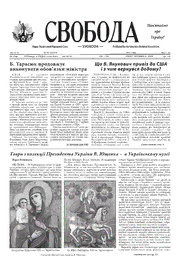
Svoboda-2006-49

Byron Alexis Mullo Naula
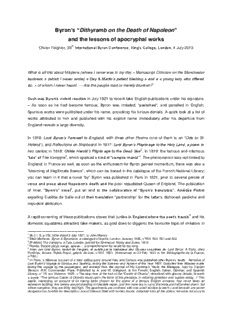
Byron’s “Dithyramb on the Death of Napoleon and the

Afkondigingsblad van Aruba 2009 no. 1
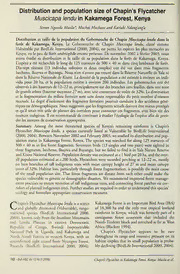
Distribution and population size of Chapin’s Flycatcher Muscicapa lendu in Kakamega Forest, Kenya
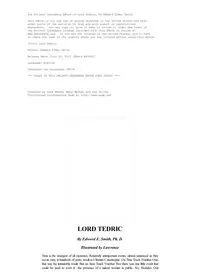
Lord Tedric by Edward E Smith Ph D

2008 Benjamin Menschel Fellowship exhibition catalog
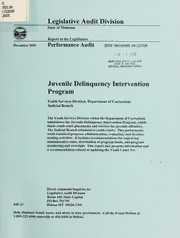
Juvenile delinquency intervention program, Youth Services Division, Department of Corrections, Judicial Branch : performance audit

DTIC ADA449060: Optimized Hyperthermia Treatment of Prostate Cancer Using a Novel Intracavitary Ultrasound Array

Warning Order - Issue #16

Ark Performance Body Kits Installation Instructions

Greek Government Gazette: Part 7, 2006 no. 630
